By: Veronica Buchanan and Alexander Badue
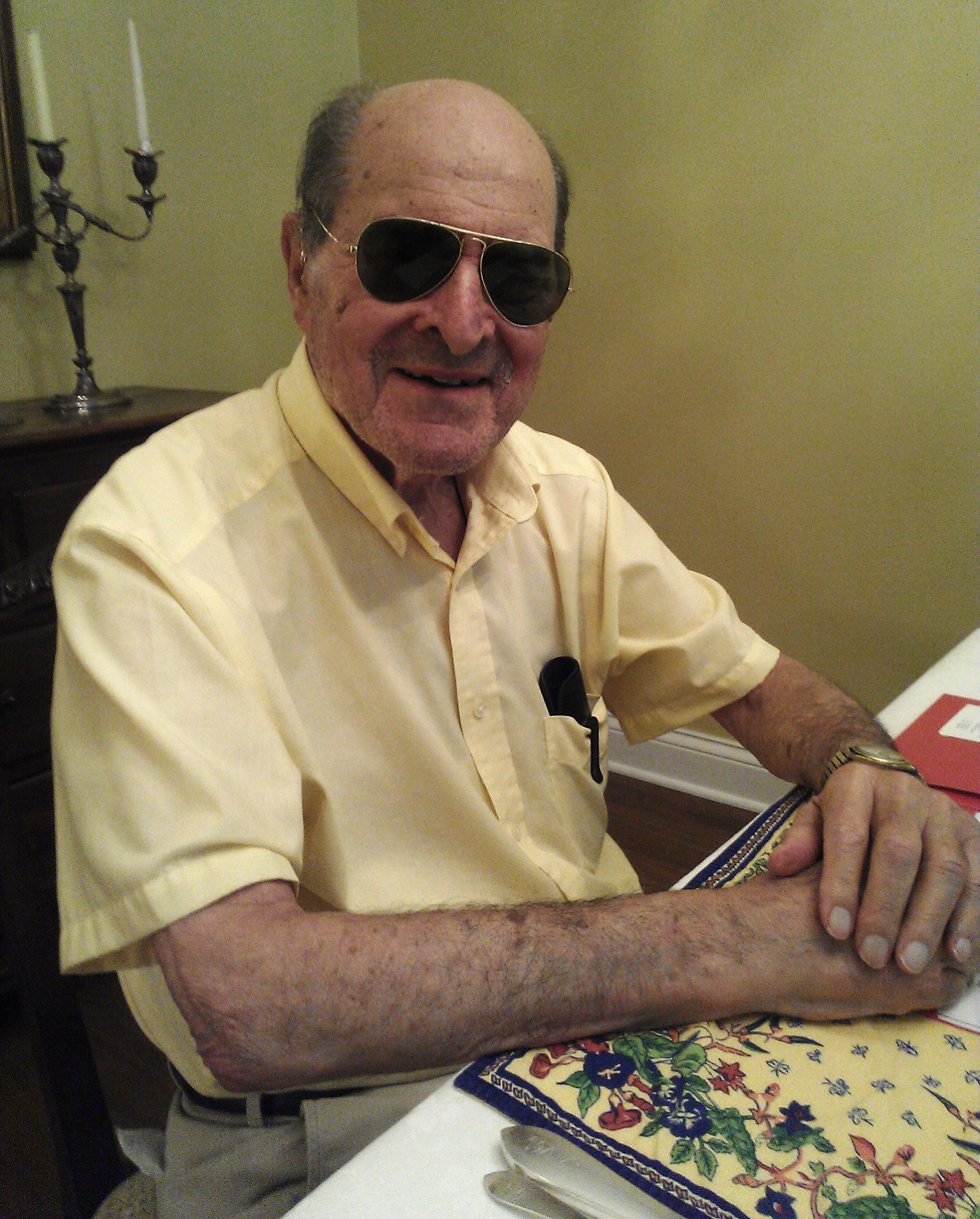
Dr. Henry Heimlich, wearing the same
aviator sunglasses he used
while stationed in China
On July 17, Assistant Dean of University of Cincinnati Libraries and Executive Director of the Henry R. Winkler Center, Stephen Marine, and Christa Bernardo of the UC Foundation met with Dr. Henry Heimlich, his daughter Janet, and granddaughter Maxine at his home in Cincinnati.
Among many items discussed, one thread seemed to connect throughout the entire discussion, Dr. Heimlich’s connection with SACO, the Sino-American Cooperative Organization, an unprecedented military partnership between China and the United States during World War II. Heimlich displayed one of his personal treasures from his time in China, the aviator sunglasses that he continues to wear to this day, complete with their original storage case.
LTJG Henry Heimlich, MC, USNR had volunteered for a mission to China on January 9, 1945, a mission so dangerous given the terrain and remote location that his commanding officer tried to talk him out of it. Heimlich was eventually assigned to a 12-member U.S Naval unit to be dispatched to China; they were given the code-name “The Apostles” due to their number. Their final destination was a town called Shempa in the Suiyan Province deep in the interior of Mongolia in the middle of the Gobi desert. The Apostles arrived on June 4, 1945 and quickly got to work constructing what would be known as Camp No. 4.
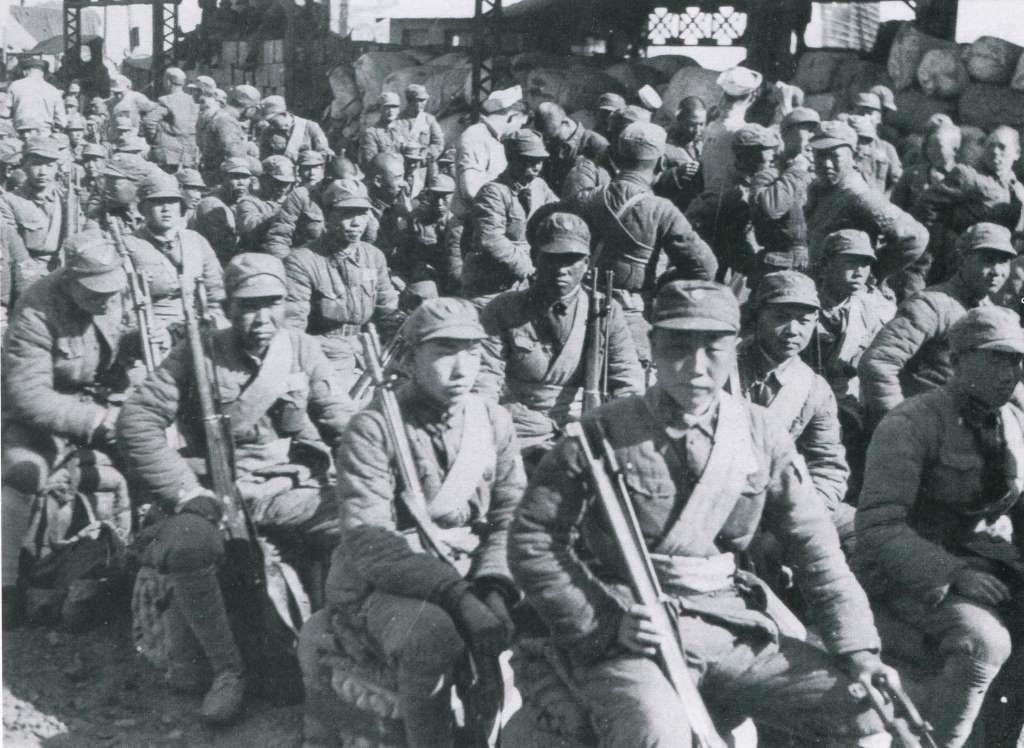
Chang Kai-shek’s troops await transportation to the front to battle with Japanese invaders
Camp 4 provided guns, medicines and medical care, supplies, and training for Chinese Nationalist guerillas, headed by General Chang Kai-Shek; in return, the Chinese provided both weather and intelligence information, navigational aid, and assistance with sabotaging Japanese targets.
In a copy of Heimlich’s personal diary, he describes the “amenities” of Shempa as well as his medical duties:
“This is what I found in Shempa. We had taken over some not too bad mud buildings which the Chinese had stolen from some Belgian priests to give us. Governor Fu-Tso-I had given us horses. After dashing over sand dunes we had a natural swimming hole, about 200 feet in diameter, of clear water, which we shared with horses, oxen, and camels; by the way, did you know that it is too hot for camels to travel in the summer? They only go from fall to spring….My work was to treat all the American and Chinese in camp officially….Out of this group I actually drew most of my interesting and seriously ill patients….I even had use of the governor’s car which is the only vehicle other than our own jeep and truck, and gas comes all the way from Lauchow. In addition, I treated any peasants who came to my clinic. In short, I was the only source of medical attention for the thousands around here….There were times when 50 carriages were lined up outside camp during my sick call.”
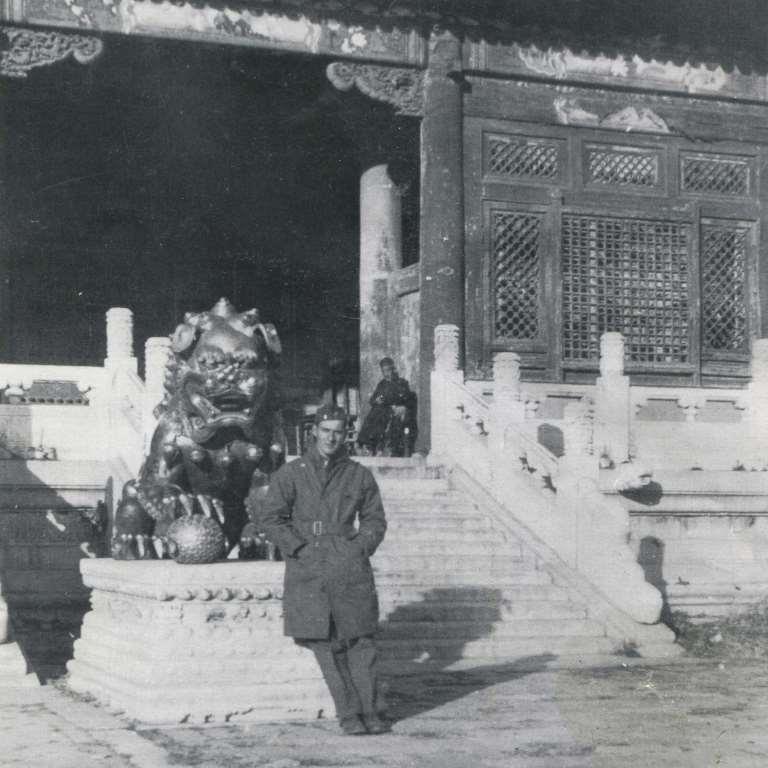
Dr. Heimlich in China ca. 1945
Heimlich stayed in Shempa for two months following the end of WWII. When asked about the end of the war in a 1995 interview in Navy Medicine magazine, Heimlich responded, “About a week [after the atomic bomb was dropped], we got a message that was the first ever not in code: “It’s Over.” We screamed and yelled. The Chinese were troubled, their future was in jeopardy.”
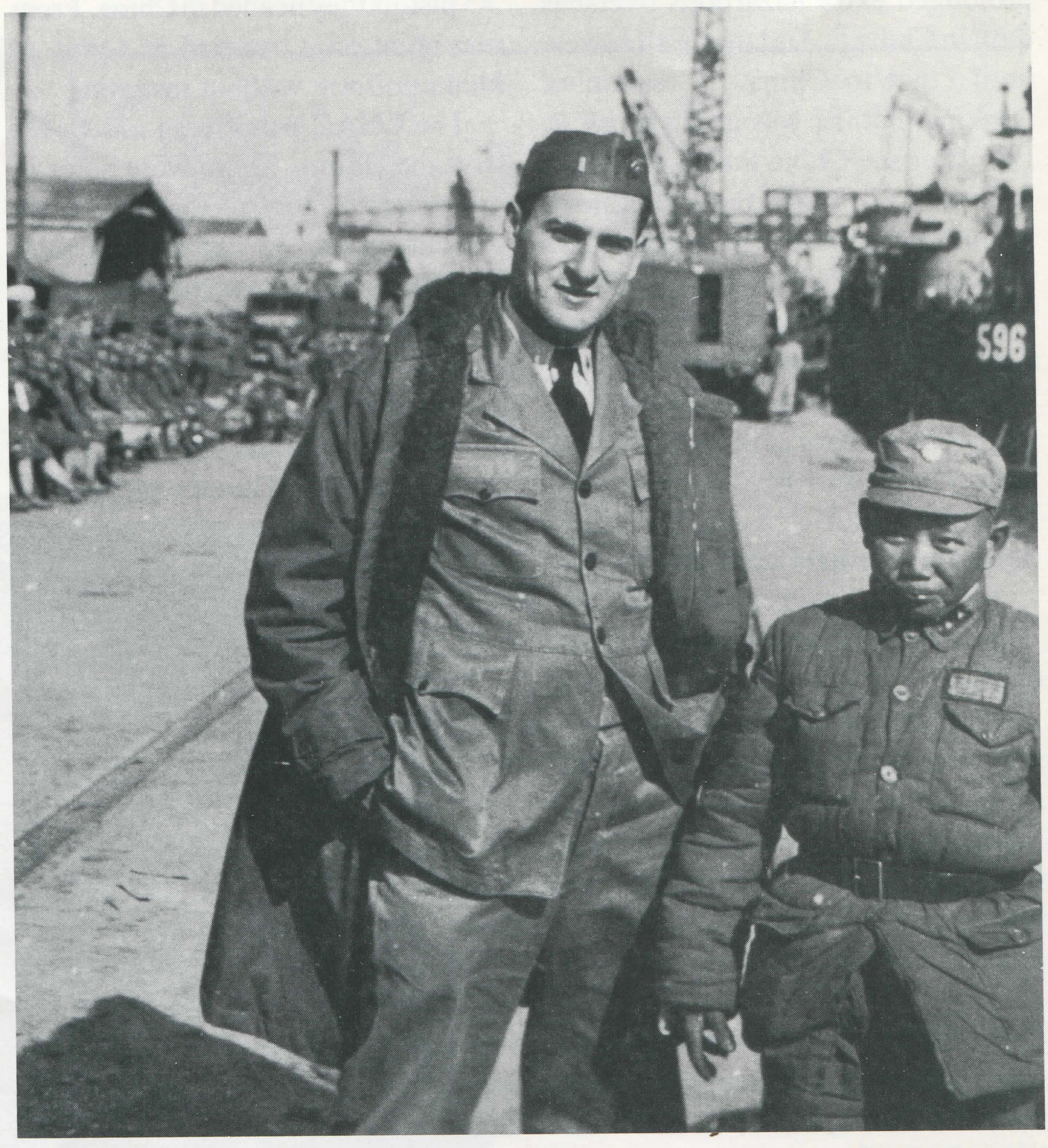
Dr. Heimlich and a Chinese soldier pose for a snapshot on the Shanghai waterfront
Two months following the end of the war, Heimlich traveled to Shanghai where he spent 6 months on the hospital ship Repose. In the Navy Medicine interview, Heimlich relays a story of a patient that haunted him for years:
“One of the Chinese soldiers got shot in the chest accidentally during training. The first night I just put on a bandage because the light was really bad. Chest surgery was in its infancy and I had surely never opened a chest before. It was a through-and-through wound and by the morning he was near death. Therefore, I decided to operate. I found a huge hole form the entrance wound to exit wound, 5 to 6 inches. I found a 3-inch hole in one of his lungs and sutured it up. But closing was basically impossible due to massive amounts of torn tissues. Unfortunately, the patient expired during final closure. I always felt guilty; should I have done anything else?”
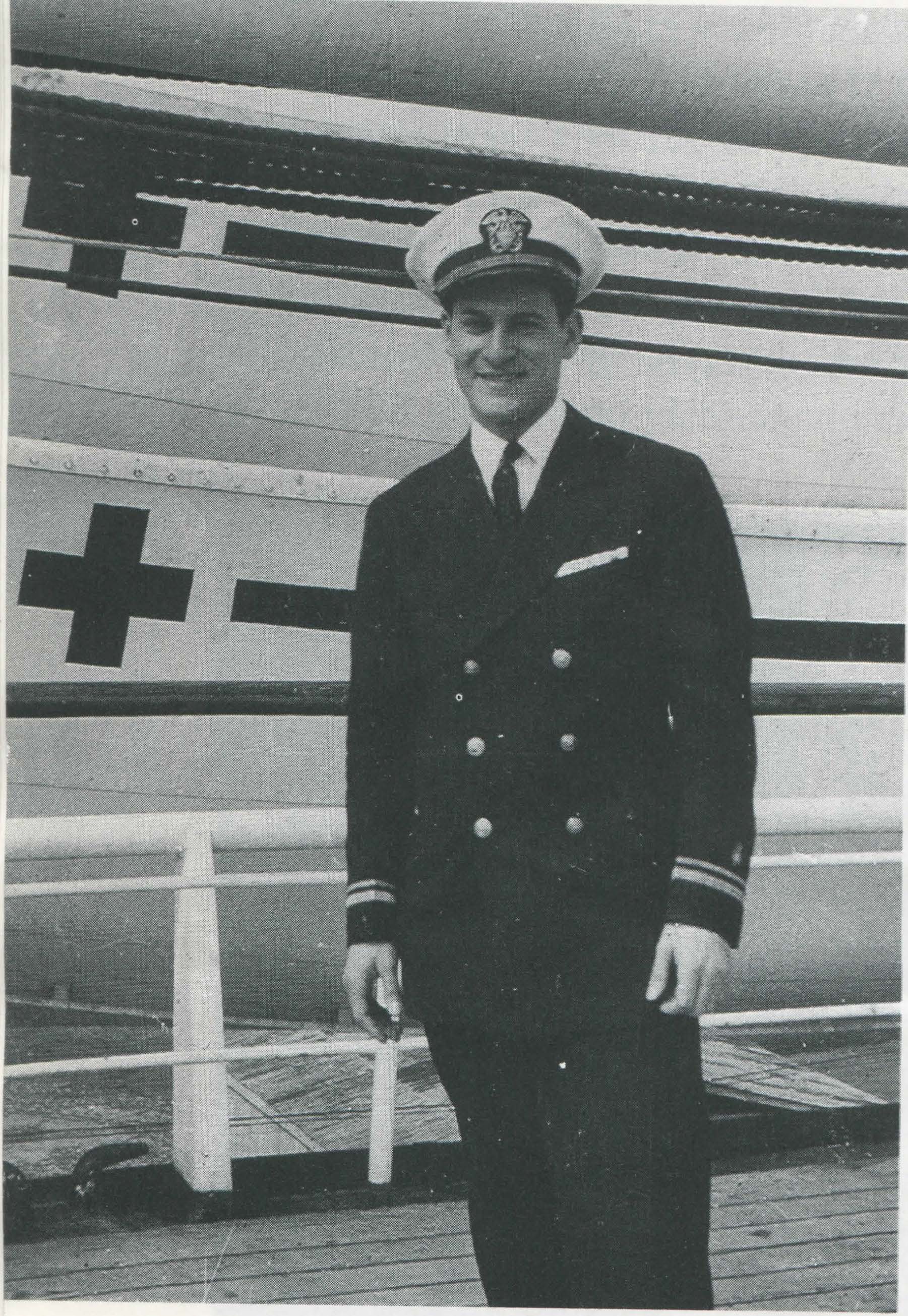
Dr. Heimlich in front of the hospital ship Repose
This soldier’s story eventually inspired Dr. Heimlich to create the Heimlich chest drain valve. The valve was eventually used extensively during the Vietnam War. Recently, Dr. Heimlich asked the Winkler Center to research the use of the valve in Vietnam. Through this request, we uncovered notes Heimlich wrote following a 1993 trip to Vietnam; he noted that he was greeted with much respect by doctors and civilians alike and was told he saved numerous lives in Vietnam. He was then surprised to find that it was not because of his famous Heimlich maneuver but rather his invention of the chest valve.
Through the lens of Dr. Heimlich’s archival collection, we hope to make further connections relating to what inspired Heimlich to create his world-renowned inventions and techniques. Hopefully, that goal will be accomplished further through the acquisition of artifacts connected to Heimlich’s time with SACO in China, which Dr. Heimlich graciously agreed to donate during his meeting with Steve and Christa. A finding aid for the Winkler Center’s current collection from Dr. Heimlich is available by clicking here.
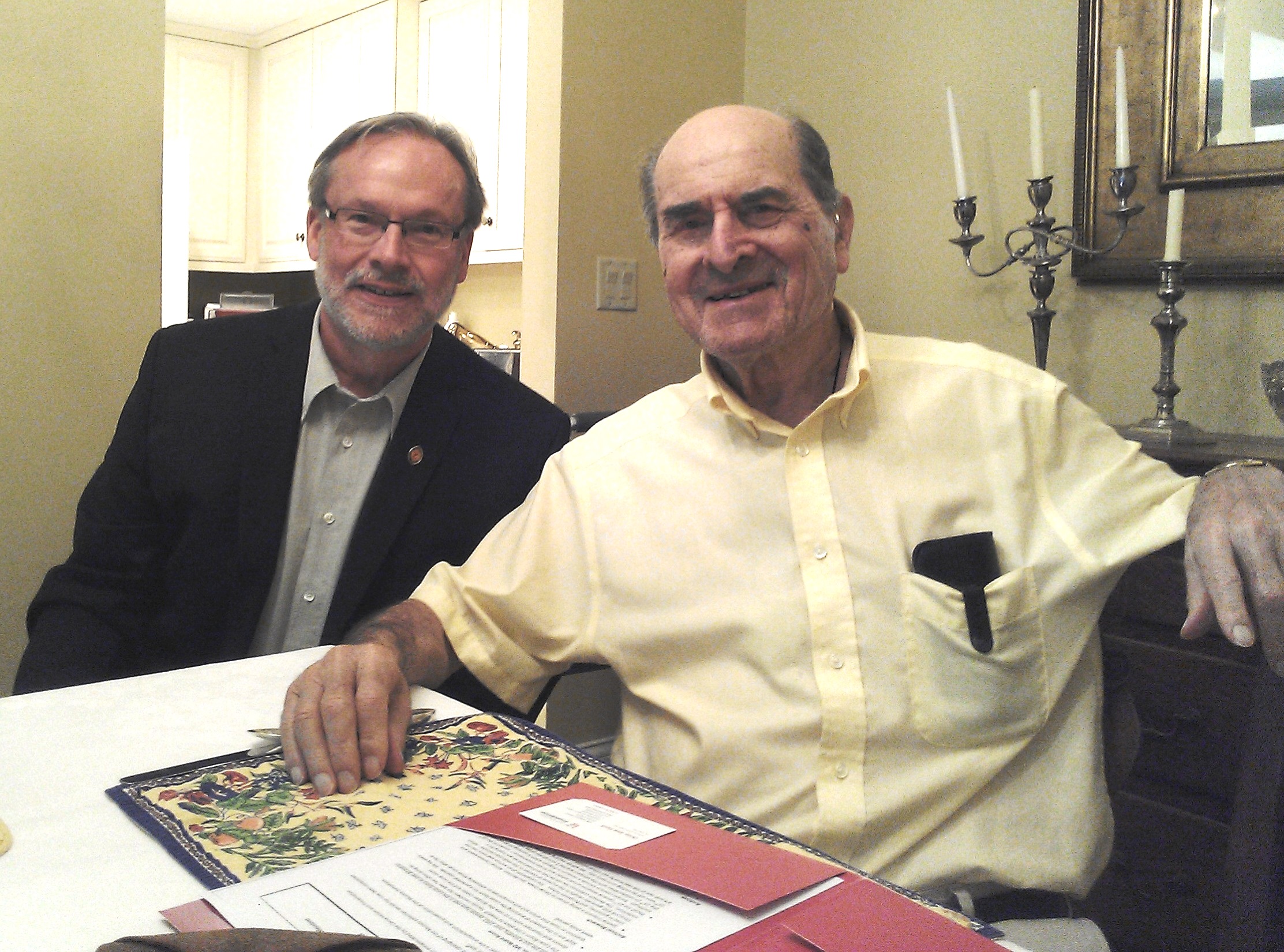
From left to right: Stephen Marine and Henry Heimlich, M.D.
Dr. Heimlich’s Residence
July 17, 2014
To view the Henry Heimlich, MD collection or for a tour of the Winkler Center, please call 558-5120 or email chhp@uc.edu to schedule an appointment.
